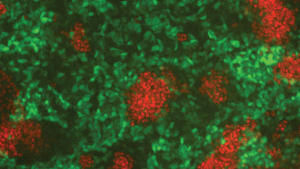
Much of the water supply in Britain is chlorinated to kill germs, although experts say it is at much lower levels than in the U.S.
Chlorine in tap water has been linked to the rising number of people developing food allergies, a study has revealed.
The chemical, which is used to treat drinking water and is also present in commonly-available pesticides and household items, may weaken food tolerance in some individuals.
Researchers found adults with high levels of dichlorophenol - a chemical by-product of chlorine - in their urine, were up to 80 per cent more likely to have a food allergy.
Britain has seen a rise in food allergies in recent years, with up to ten million adults claiming to be unable to eat a variety of foods from milk to mustard - although scientists believe the figure may be exaggerated by the 'worried well'.
Studies also estimate that four per cent of children have a food allergy. A rising number are diagnosed with gut allergies linked to common foods such as cow's milk, wheat, soya, eggs, celery, kiwi fruit and other fruit and vegetables.
Food allergy can take the form of a sudden life-threatening reaction known as anaphylaxis, as well as eczema or an itchy rash. Much of the water supply in Britain is chlorinated to kill germs, although experts say it is at much lower levels than in the US.


Comment: SOTT.NET has carried numerous articles about the negative heath risks associated with High Fructose Corn Syrup (HFCS); read the following for more information:
High-Fructose Corn Syrup is Evil: 7 Key Findings
Four Reasons to Avoid High Fructose Corn Syrup
How High Fructose Corn Syrup Damages Your Body
The Dirty Truth About High Fructose Corn Syrup...
Why High-Fructose Corn Syrup Causes Insulin Resistance
High Fructose Corn Syrup - The Poison that Promotes Obesity and Liver Damage
How Sweet It Isn't! Cutting Through the Hype and Deception of High Fructose Corn Syrup
Soda and Food Warning! High-fructose Corn Syrup Linked To Diabetes, New Study Suggests